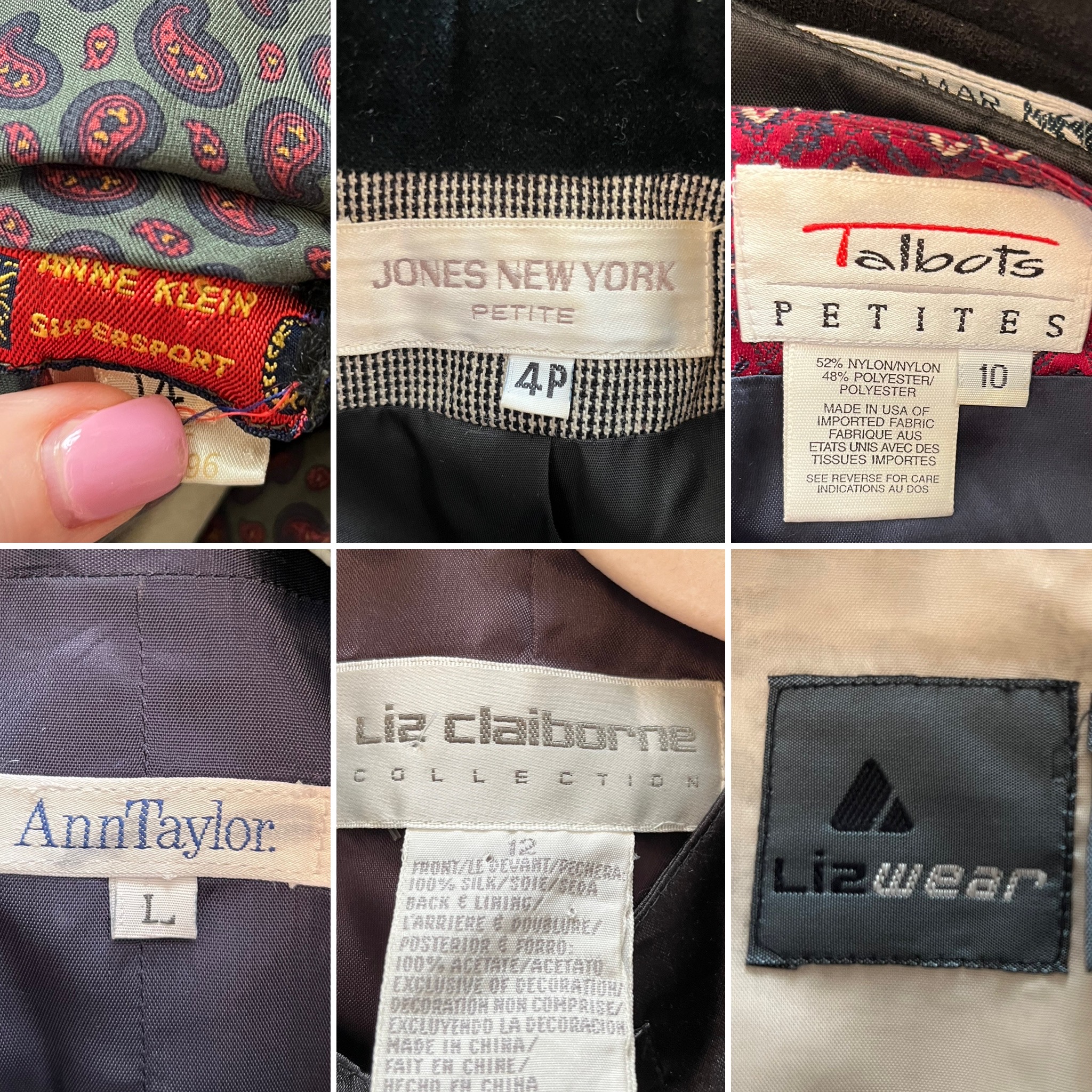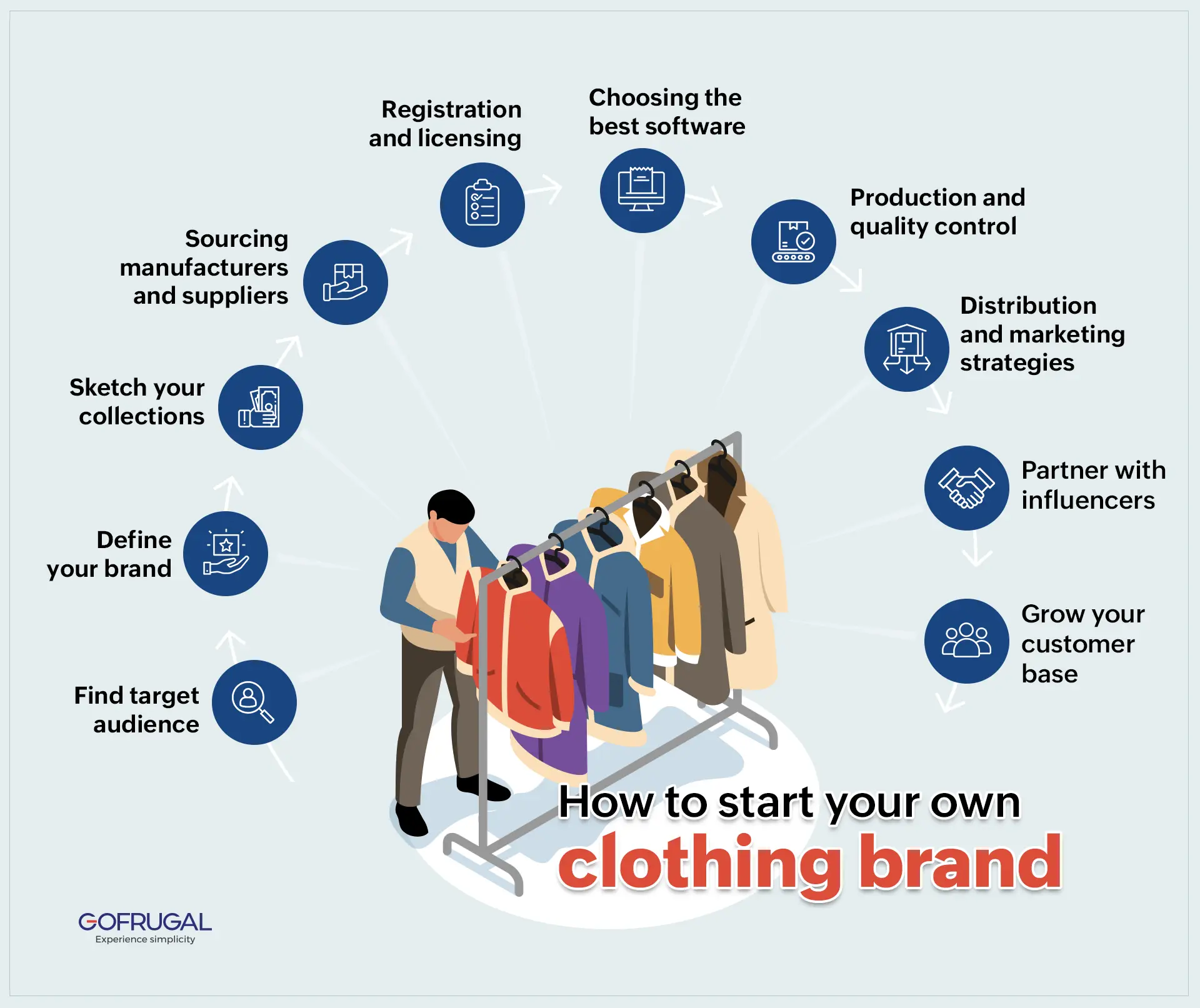Understanding Fabric Weaves and Textures in Branded Clothing
Wiki Article
The Importance of Lasting Apparel: Just How It Influences the Setting and Your Wardrobe
Lasting clothing is significantly acknowledged for its crucial duty in minimizing the ecological influence of the rapid apparel industry. By focusing on environment-friendly materials and honest production approaches, it deals with pushing environmental problems. This change not only benefits the world however also affects consumer choices, bring about an extra thoughtful technique to wardrobe administration. Understanding these characteristics raises important questions about style's future and personal responsibility in shaping it.The Ecological Impact of Fast Style

Benefits of Sustainable Products
Sustainable products supply considerable benefits, particularly with eco-friendly fabric selections that reduce environmental injury. These products likewise show resilience and durability, minimizing the demand for regular replacements. Consequently, they contribute to a much more lasting apparel industry and promote accountable consumer habits.Eco-Friendly Textile Selections
While the fashion business has actually long been connected with quick patterns and ecological harm, the increase of environmentally friendly material choices presents a transformative possibility. Sustainable products such as organic cotton, hemp, and Tencel have actually gained appeal as a result of their lower ecological influence. These materials are commonly created without unsafe pesticides and need much less water, minimizing their carbon footprint - Branded Clothing. In addition, numerous green materials are naturally degradable, adding to a circular economy by lessening waste. Picking lasting materials not only supports eco liable practices however likewise advertises healthier environments. As consumers come to be much more knowledgeable about their purchasing power, the demand for eco-friendly textiles motivates brands to introduce and take on even more lasting manufacturing approaches, ultimately profiting the earth and future generations
Toughness and Durability Benefits
Numerous customers are progressively identifying the longevity and durability advantages of sustainable products in their apparel options. Unlike standard materials, lasting materials such as organic cotton, hemp, and recycled polyester are engineered to hold up against wear and tear, causing garments that last much longer. This reduced frequency of replacement not just conserves customers money over time yet likewise diminishes waste generated by fast fashion. On top of that, lasting garments often employs environment-friendly manufacturing approaches that improve textile strength, adding to a decrease in the general carbon footprint. By buying durable clothing, consumers can cultivate a more lasting closet while delighting in top notch items that maintain their visual and performance in time. Durability and durability stand as key benefits of selecting sustainable products.Reducing Waste Through Sustainable Practices
Lowering waste in the garment industry can be accomplished with ingenious practices such as upcycling and repurposing materials. In addition, adopting minimal wardrobe strategies urges consumers to prioritize high quality over quantity, eventually decreasing clothes usage. With each other, these approaches add significantly to a much more lasting garments model.Upcycling and Repurposing Materials
Upcycling and repurposing products have become ingenious strategies in the style market, changing thrown out textiles into beneficial brand-new items. This strategy not just lessens waste yet additionally motivates creative thinking and individuality in clothing design. By taking old garments and materials, designers can create unique items that reflect personal style while reducing the demand for new resources. Additionally, upcycling frequently requires less energy and water compared to conventional production procedures, greatly reducing the environmental impact of style. As customers end up being extra knowledgeable about sustainability, the appeal of upcycled apparel remains to increase, promoting a round economy. Inevitably, these methods add to a more sustainable future, where fashion prioritizes environmental wellness over quick manufacturing and intake.
Minimalist Wardrobe Methods
As individuals progressively look for to reduce their environmental effect, taking on minimalist closet approaches has actually gotten grip as an effective approach to lasting fashion. These approaches highlight top quality over quantity, encouraging consumers to curate a smaller collection of functional, long lasting garments. By concentrating on classic pieces that can be blended and matched, individuals can reduce the frequency of acquisitions and inevitably decrease waste.Additionally, minimalism advertises mindful usage, urging buyers to assess the ecological and honest ramifications of their selections. This method not just fosters a much more lasting lifestyle but additionally streamlines day-to-day decision-making concerning clothing. As people welcome minimal principles, they add to a style society that values sustainability and liable consumerism, inevitably resulting in a much more eco-conscious culture.The Function of Ethical Labor in Lasting Fashion
While numerous customers are significantly knowledgeable about the ecological consequences of their clothes selections, the value of ethical labor practices in lasting fashion can not be neglected. Ethical labor encompasses fair salaries, risk-free working conditions, and regard for employees' legal rights, developing the foundation of accountable style manufacturing. Brands that prioritize ethical labor not just boost communities yet also established a requirement for liability in the industry.Moreover, the combination of honest methods cultivates transparency, allowing consumers to make informed choices about their acquisitions. This practice contrasts greatly with fast style's exploitative labor designs, which often prioritize earnings over individuals. By supporting business dedicated to honest labor, consumers add to a system that values human self-respect alongside environmental sustainability. Consequently, moral labor is not simply an add-on; it is crucial to the click here for more wider mission of lasting fashion, making certain that the mission for eco-friendliness does not come with the expense of human civil liberties.The Influence of Sustainable Garments on Carbon Emissions
Lasting clothes has the potential to greatly decrease carbon exhausts related to the fashion business. Typical garment production contributes notably to greenhouse gas exhausts, largely because of energy-intensive manufacturing processes and making use of non-renewable sources. On the other hand, lasting fashion concentrates on environment-friendly materials, such as natural cotton or recycled fibers, which typically call for much less energy to produce.Moreover, lasting brands have a tendency to take on extra reliable production techniques, lessening waste and lowering general discharges. By prioritizing durability and classic layout, lasting apparel motivates customers to buy much less frequently, additional decreasing the carbon footprint associated with overconsumption.Additionally, many sustainable brands are dedicated to openness in their supply chains, making it possible for customers to make informed selections that line up with their worths. Eventually, changing towards lasting clothes can lead to a considerable reduction in carbon exhausts, adding to a healthier planet and an extra lasting future for the style sector.Supporting Local Economic Situations With Sustainable Options
The shift towards lasting clothes not just addresses ecological issues but likewise substantially benefits neighborhood economic situations. By picking lasting fashion, consumers frequently sustain little companies and local artisans, enhancing area strength. These business generally run on a smaller range, prioritizing craftsmanship and ethical practices over mass production.Investing in locally made sustainable clothes fosters task production and promotes financial development within areas. As consumers end up being much more knowledgeable about the ecological impact of their acquisitions, they progressively choose products that reflect their values. This need encourages neighborhood manufacturers to embrace sustainable practices, adding to a round economy.Moreover, sustaining local businesses reduces transportation emissions, straightening with eco-conscious customer behavior. The interconnectedness of lasting clothes and regional economic situations emphasizes the crucial duty that individual options play in advertising both ecological and financial health. By cultivating these local connections, neighborhoods can flourish while likewise functioning towards a much more lasting future.Changing Your Wardrobe: Tips for a Sustainable Closet
As people look for to minimize their environmental influence, transforming a storage room into a lasting wardrobe ends up being a crucial action. One efficient approach is to evaluate existing clothing, maintaining just products that are worn frequently and that align with sustainability objectives. Prioritizing high quality over amount is vital; purchasing sturdy pieces from eco-friendly brand names can greatly lower waste.Additionally, incorporating second-hand products can revive a closet while decreasing ecological damage. Organizing clothes swaps with buddies or contributing extra products can even more promote sustainability.When buying, people should seek materials that are natural, recycled, or eco-friendly, and prevent rapid style sellers - Branded Clothing. Finally, exercising conscious usage by thoughtfully taking into consideration each acquisition can contribute to an extra sustainable way of living. By applying these ideas, one can develop a closet that shows personal design while sustaining ecological stewardshipOften Asked Concerns
How Can I Determine Lasting Apparel Brands?
To recognize lasting clothing brands, one need to investigate materials used, look for certifications like Fair Trade, and analyze the brand's transparency about their production procedures, labor practices, and ecological effect, guaranteeing honest and eco-friendly techniques are focused on.What Are the Costs Associated With Sustainable Fashion?
The prices related to sustainable fashion can differ considerably. Higher manufacturing costs, ethical sourcing, and environmentally friendly products frequently result in increased retail rates, which might prevent some customers while interesting eco aware consumers.Can Lasting Clothes Be Stylish and stylish?
Sustainable garments can indeed be stylish and trendy. Designers increasingly focus on ingenious products and ethical manufacturing techniques, confirming that fashion and sustainability can exist together. Consumers currently have diverse alternatives that blend aesthetics with environmental awareness.Exactly How Does Washing Clothing Affect Their Sustainability?
Cleaning garments substantially influences sustainability by consuming water and power, adding to pollution, and triggering microplastic release. Constant washing can degrade visit homepage fabrics, shortening their lifespan and enhancing the demand for replacements, inevitably exacerbating environmental issues.What Is the Life-span of Lasting Garments Compared to Fast Fashion?
The life-span of lasting apparel typically surpasses my explanation that of fast fashion things, often long lasting several years because of high quality materials and craftsmanship. On the other hand, quick fashion garments might degrade rapidly, demanding even more regular replacements. Lasting clothing is progressively recognized for its crucial role in decreasing the ecological effect of the quick fashion market. While several consumers are progressively mindful of the environmental consequences of their clothes options, the significance of ethical labor practices in lasting fashion can not be neglected. Branded Clothing. Sustainable apparel has the potential to considerably minimize carbon exhausts linked with the style market. In comparison, lasting style focuses on environmentally friendly products, such as natural cotton or recycled fibers, which commonly need much less power to produce.Moreover, sustainable brands often tend to adopt more effective manufacturing techniques, minimizing waste and decreasing overall discharges. By focusing on durability and timeless style, sustainable garments urges customers to get much less regularly, more lowering the carbon footprint connected with overconsumption.Additionally, many lasting brands are devoted to transparency in their supply chains, making it possible for customers to make educated choices that line up with their worthsReport this wiki page